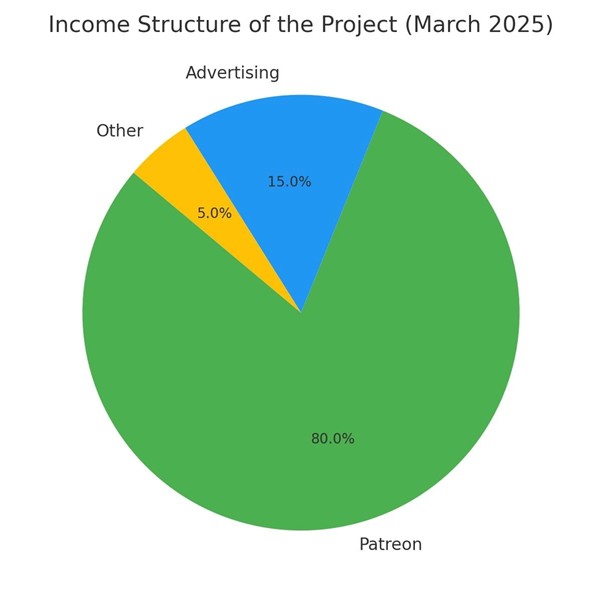Last Updated on: 14th October 2025, 04:56 pm
In collaboration with Mariia Shubina, an expert in entrepreneurship and digital content strategy, specializing in personal brand building and scaling online media businesses to international success.
The material is devoted to the development of digital brands and the building of an ecosystem around a character. The main focus is on monetization through subscriptions, advertising collaborations, and merch, as well as the impact of these solutions on business sustainability. Based on personal experience, it examines how unique content and a well-thought-out strategy make it possible to scale an online project, enter international markets, and generate stable income.
Digital Brand as a Business Asset
A personal brand in the digital environment has long ceased to be solely a tool of self-expression. It becomes an asset capable of generating income and attracting investment in the form of audience attention.
According to Forbes (2024), the global creator economy market is estimated at more than $250 billion, and by 2030 it may reach $480 billion. Such dynamics confirm that digital projects have not only cultural but also significant business value.
Experience has shown: the number of subscribers matters, but the key factor is engagement and the audience’s readiness to convert into paid products.
Experience of Creating a Digital Brand
The project began with publishing illustrations on social networks. By the end of 2024, the audience numbered only one thousand subscribers, but by March 2025 it had grown to 60 thousand, with a monthly reach of 8–10 million views and posts receiving between 25 and 55 thousand likes.
The decisive moment was the transformation of the account into a lifestyle blog on behalf of the character. This format distinguished the project from many others and made the content not just a set of visual works, but a story the audience wanted to share.
Diversification of Revenue Sources
The brand became a business only when a monetization plan was established. In March 2025, Patreon was launched, where revenue immediately reached $20,000 per month.
Gradually, a system was built, including:
- Patreon as the main source of income;
- advertising collaborations that allow the audience to expand;
- merch and physical products (toys, stickers, postcards), which strengthen brand recognition;
- digital products in the format of exclusive content.
Data Visualization
The main source of income comes from Patreon (≈80%), advertising generates about 15%, and other channels account for 5%.
Revenue Forecast with Merch and Collaborations
With the development of merch and the expansion of collaborations, revenue is projected to grow from $20,000 to $35–40,000 per month.
International Audience and Positioning
The majority of the audience is located in the USA and the EU. This fact requires taking cultural specifics into account, adapting communication, and working with platforms that have global reach. Such a strategy allows market expansion and reduces dependence on local algorithms.
Risks and Challenges
The development of a digital brand is accompanied by a number of challenges:
- dependence on platform rules and algorithm changes;
- the need for a transparent approach to monetization;
- high competition in the collaboration market.
Project sustainability is achieved through constant attention to content quality and the search for new forms of audience engagement.
Experience confirms that a digital brand built around a character can transform into a full-fledged business with international reach. Success is ensured by effective positioning, diversification of revenue sources, and continuous work on audience engagement.
Digital content becomes not only a form of self-expression but also a sustainable business ecosystem with long-term value.
Sources
- Forbes. The Creator Economy Could Approach Half A Trillion Dollars By 2030. 2024.
- McKinsey & Company. Global Media Report. 2024.
- Patreon. Official Statistics. 2025.
- Case study: Ms. Shubina, digital content creator (2024–2025).





